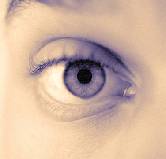
THURSDAY, April 3, 2014 (HealthDay News) — White boys are the most likely to be color blind, while the risk is lowest in black boys, a new study finds.
The researchers also confirmed that girls are much less likely to be color blind, which is an inability to see colors accurately. The most common form of the condition involves a genetic mutation that makes it hard to distinguish the color red from the color green.
Researchers tested more than 4,000 preschoolers, aged 3 to 6, in California and found that 5.6 percent of white boys were color blind, compared with 3.1 percent of Asian boys, 2.6 percent of Hispanic boys, and 1.4 percent of black boys.
Among girls, rates of color blindness ranged from 0 percent to 0.5 percent among different racial/ethnic groups, according to the study published online April 3 in the journal Ophthalmology.
The researchers also concluded that screening for color blindness can begin at age 4. Testing for the condition at an early age is important because children with color blindness often do poorly on tests or assignments that feature color-coded materials.
“It’s not that the child is not smart enough or bright enough, it’s that they see the world a little differently,” lead investigator Dr. Rohit Varma, chairman of the department of ophthalmology at the University of Southern California (USC) School of Medicine and director of the USC Eye Institute, said in a journal news release.
Children with color blindness require different types of lesson plans that don’t require the ability to see colors correctly.
“That needs to start early on because labeling a child as not smart or bright enough is a huge stigma for the child and causes significant anxiety for the parents and family,” Varma said.
More information
Prevent Blindness America has more about color blindness.
Copyright © 2025 HealthDay. All rights reserved.

